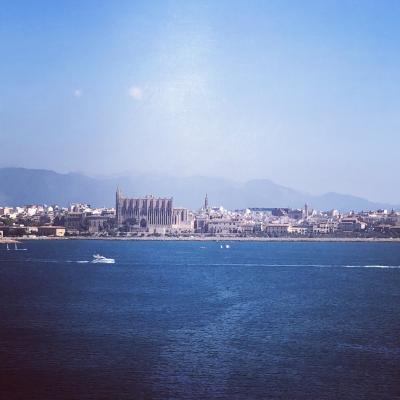What makes Palma Cathedral a significant example of Gothic architecture in Mallorca?
Similar Topics
palma cathedral
gothic architecture
mallorca cathedral
la seu
rose window
medieval architects
antoni gaudí
stained glass windows
Palma Cathedral, also known as La Seu, is a remarkable example of Gothic architecture that stands prominently in Mallorca, reflecting both the artistic ambitions and cultural history of the region. Its construction began in the 13th century, shortly after the Christian conquest of the island, and it was intended to symbolize the triumph of Christianity. The cathedral’s towering stone façade, with its finely detailed pointed arches and ribbed vaults, is characteristic of the Gothic style, emphasizing verticality and light. Designed to inspire awe, the cathedral’s grand scale and intricate stonework showcase the technical expertise and aesthetic values of medieval architects and artisans.
One of the most striking features of Palma Cathedral is its expansive nave, which is notably one of the widest among Gothic cathedrals in Europe. This wide, open space is supported by slender columns that draw the eye upward towards the soaring ceiling, creating an impression of ethereal spaciousness. The structure’s large stained glass windows, including the famous Rose Window, flood the interior with natural light, casting colorful patterns across the stone surfaces and enhancing the spiritual atmosphere. These windows are not only artistic masterpieces but also serve to narrate biblical stories and showcase religious symbolism through their detailed iconography.
Furthermore, Palma Cathedral integrates elements that reflect its unique setting and history. Unlike many Gothic cathedrals, it is situated close to the sea, giving it a distinctive silhouette against the Mediterranean skyline. Over centuries, it has also undergone changes that blend Gothic with Renaissance and modern influences, including contributions by the renowned architect Antoni Gaudí in the early 20th century. These elements combine to make Palma Cathedral not only an important religious site but also a living monument to the evolving styles and cultural interactions that have shaped Mallorca. Its grandeur, architectural purity, and historical significance firmly establish it as a premier exemplar of Gothic architecture on the island.
One of the most striking features of Palma Cathedral is its expansive nave, which is notably one of the widest among Gothic cathedrals in Europe. This wide, open space is supported by slender columns that draw the eye upward towards the soaring ceiling, creating an impression of ethereal spaciousness. The structure’s large stained glass windows, including the famous Rose Window, flood the interior with natural light, casting colorful patterns across the stone surfaces and enhancing the spiritual atmosphere. These windows are not only artistic masterpieces but also serve to narrate biblical stories and showcase religious symbolism through their detailed iconography.
Furthermore, Palma Cathedral integrates elements that reflect its unique setting and history. Unlike many Gothic cathedrals, it is situated close to the sea, giving it a distinctive silhouette against the Mediterranean skyline. Over centuries, it has also undergone changes that blend Gothic with Renaissance and modern influences, including contributions by the renowned architect Antoni Gaudí in the early 20th century. These elements combine to make Palma Cathedral not only an important religious site but also a living monument to the evolving styles and cultural interactions that have shaped Mallorca. Its grandeur, architectural purity, and historical significance firmly establish it as a premier exemplar of Gothic architecture on the island.
🧩 Related Questions
Related Question
How do Mallorcan festivals contribute to preserving and expressing the island's historical memory through art and performance?
Related Question
How does bullfighting contribute to tourism revenue in Spain and South America?
Related Question
How does the interaction between surface water and underground rivers influence Mallorca’s overall water conservation strategies?

